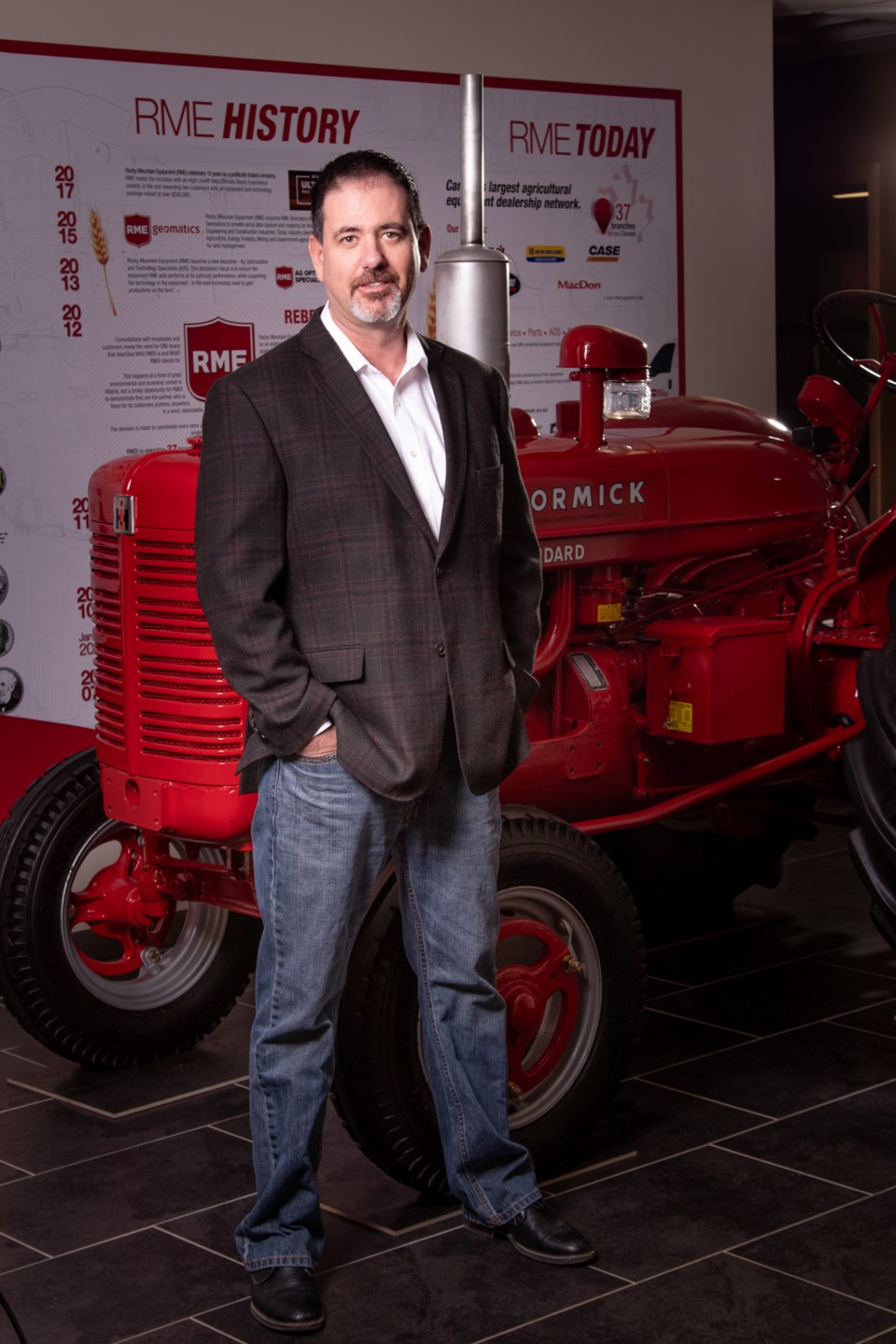Farmers appear optimistic headed toward the 2019 seeding season.
At least that is the general feeling Jim Wood, Chief Sales and Operations Officer with Rocky Mountain Equipment (RME), is getting.
Wood was in Yorkton March 20, as part of a tour through RME properties in Saskatchewan.
“I try to get out once or twice a year,” he said, adding it is an opportunity not just to touch base with staff, but also farm customers.
“We meet with customers and get a gauge on how they think we’re doing.”
In Yorkton Wood had supper with a number of producers, where he said the message was general optimism.
Looking back on 2018 Wood said many producers reported excellent yield and quality, which is a positive headed toward a new crop year.
Yes, there are some challenges, “the canola thing with China” where that country is blocking sales, “which has made things a little nervy”, but producers are not over-reacting, said Wood.
Most producers are anticipating planting “the exact same amount (of canola) as they would normally,” he said.
In general, Wood said producers never get too concerned about the new crop in March.
“I’ve never seen a crop failure in February, or March, before,” he said.
Of course it does depend on just where a farm is located. Wood noted in Alberta and southern Saskatchewan “reserves of moisture got used up last year,” necessitating timely rains this spring and summer, which locally that is less of a concern.
Farming is of course at the core of RME’s business as the largest independent agricultural equipment dealer in Canada and the largest Case IH dealer in North America, according to background information provided by the company. RME’s business employs nearly 1,000 people directly, operating more than 36 dealerships across Alberta, Saskatchewan and Manitoba.
Wood said that core business is a competitive one, noting the recent arrival of a Claas dealership to the Yorkton market, but he added RME is doing well with numbers up over last year.
The key is keeping up with technology as it emerges for the farm sector, then looking after customers who purchase.
“Customers all tell you it’s about service,” he said.
As for technology “it’s always changing,” offered Wood, who added the important aspect of new technology is ensuring it helps the producer do their job better.
“It’s adding efficiencies into the equipment,” he said, adding that doesn’t always mean lowering costs. As an example, he said using technology to apply fertilizer by varying rates within a field doesn’t always mean less fertilizer cost. What it does mean is an efficient application where higher rates are applied where needed, and lower rates are applied where possible.
There are also quantifiable benefits too.
“They’re seeing that (efficiency) in the health of the soil and the production,” said Wood.
In that respect technology is not progress simply for technology’s sake.
“It’s how it is adopted by farmers,” he said, adding farmers need to see a benefit.
“It’s created efficiencies,” he said, adding farmers now have access to more information based on technological monitoring, but added it is still up to the individual producer to use that data to make good on-farm decisions.
Still, in general terms more technology is coming, including robotic tractors.
Case IH “has built one,” said Wood, adding he sees the technology working in-field, even if they must still be manually driven down the road to get from location to location.
“I think we are closer than we think,” in regard to how soon such technology will be widely available, said Wood.
As robotic tractors become widely available, allowing for 24-operation, Wood said he would anticipate a move to smaller equipment. A producer may not need an 80-foot air drill when the unit can operate continually.
��




